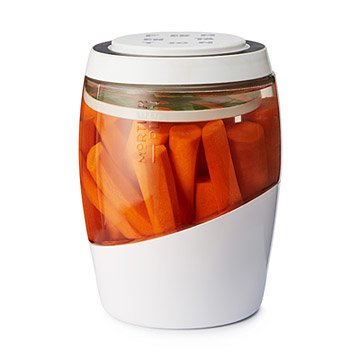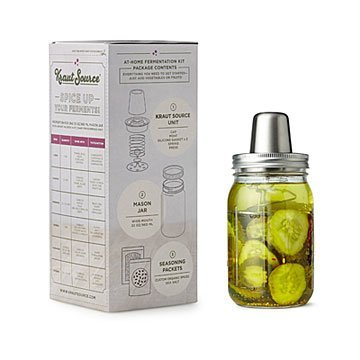Getting Started with Homebrewing
Updated June 19, 2017
Bevv it Yourself (BIY)
Homebrewing is an easy, fun way to experiment with new flavors. Most people think of beer when they hear 'homebrew,' but you can make cider, mead, wine, infused spirits, kombucha, fermented fruits and vegetables, and lots more at home - roll up those sleeves!
The technique for homebrewing beer applies to several other home brews. The pillar of all homebrewing mantras is keep it clean. Poorly sanitized equipment can ruin a home brew fast.
The easiest way to start homebrewing is to purchase an extract kit from your local home brew store or online. Extract kits typically make 5 gallons of beer, which is about 55 bottles, but there are some smaller growler and 6 pack kits available too. Here is a snapshot of the process from an Imperial IPA we brewed using an extract home brewing kit from Brew and Grow Chicago:
What you see in less than 30 seconds actually took a few hours, but it was done while drinking tasty brews so the time flew by! The first step is to clean and sanitize your brew pot, stirring utensil, fermenting bucket and anything else that will touch your home brew. At the end of the brew you'll need to top up with distilled or otherwise clean water, so we typically boil a few gallons of water first and let it cool while the brewing happens (all that is not captured in the 24 seconds...). The first brewing brewing action is to steep grains for about 20 minutes, followed by bringing the wort (word for the brew) to a boil and add malt extract and hops. Depending on the ale or lager you're making, you'll add different variants of hops at different times during the boil. After boiling for 60-90 minutes the wort is chilled using a fancy wort chiller or in our case, a sink full of ice. Once chilled to room temperature, the wort is transferred to its sanitized fermenting bucket and yeast is added. An airlock is applied to the bucket lid so our little beer baby can burp (aka ferment).
Here's a video about brewing with a similar pre-assembled kit from Northern Brewer:
Related: The Chicago BIY Map
The American Homebrewer's Association (AHA) has a great beginner's guide for reference. If you're brewing for the first time, most kits have an instruction sheet in the box. Read the directions before you begin...and you can avoid common mistakes and exploding bottles. Starter kits typically yield 5 gallons, which is about 55 bottles. You don't need to buy bottles if you can save up the bottles you drink. However, rinse them right away to avoid build up. While some articles will recommend washing them in the dishwasher, your dishwasher might leave residue that will kill yeast. If your bottles have labels or leftover adhesive, you might clog or damage the dishwasher. To remove labels, try soaking bottles in warm water with oxyclean. Sanitize bottles with an agent recommended for brewing like Star San and let them air dry (a towel may introduce bacteria).
Learn more about yeast strains at BYO
The Beer Judge Certification Program (BJCP) is the go-to resource for competition oriented style notes (view the full style guidelines here). See upcoming BJCP homebrew competitions here.
Related: GABF Medal Winners, Mapped
Get your bottle caps from the Bevv Shop:
Homebrewing is a great way to work on that #beerbod.
Home fermentation also extends to food and spirits. Fermenting at home is easy, especially with tools like DIY fermenting crock:

Or this handy dandy home fermentation kit:

If you want to try brewing kombucha, you'll first need to cope with the fact that you will be growing a living organism that looks like this:

Photo: The Kitchn
Not scared? Cool. Kombucha is a fermented tea drink, typically made from black tea and may be blended with juice for taste (like most of the store-bought Kombucha drinks). It's a very easy process consisting of making tea, adding it to the jar with the SCOBY (the living rubbery disc above) and let it sit for 7-10 days. Check out the process from Kombucha Brooklyn:
Check out our recommended books in Homebrewing, Distilling & Wine Making books on Amazon